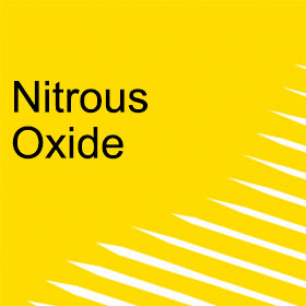Nitrous oxide
laughing gas, nitro, N2O, NOS, nangs, whippet, hippy crack, buzz bomb, balloons.
What is nitrous oxide?
Nitrous oxide is classified as a dissociative anaesthetic. It is a colourless gas that is commonly used for sedation and pain relief.
When mixed with oxygen it has proven to be useful in a range of surgical procedures. It is commonly used by dentists and medical professionals to sedate patients undergoing minor medical procedures.
It is also used by people to feel intoxicated or high by inhaling, typically by discharging nitrous gas cartridges (bulbs or whippets) into a balloon or directly into the mouth (ADF, 2020).
What are the effects?
Inhaling nitrous oxide produces a rapid rush of euphoria and feeling of floating or excitement for a short period of time.
The short-term effects of using nitrous oxide may include:
- Initial rush or ‘high’
- Euphoria
- Light headedness
- Numbness of the body
- Distorted perceptions
- Giddiness
- Anxiety
What are the risks?
Heavy use of nitrous oxide can lead to a depletion of vitamin B12, which can result in numbness, and if B12 deficiency is left untreated long-term nerve damage can result.
When inhaled by inexperienced users, nitrous oxide often leads to unconsciousness resulting from hypoxia due to the displacement of oxygen from the lungs of the user.
Releasing a whipping gas cartridge into a balloon and then inhaling it leads to the inhalation of 100% nitrous oxide. This starves the brain of oxygen (‘hypoxia’), and can be fatal.
Acute effects of nitrous oxide may include:
- Disorientation/confusion
- Impaired memory/forgetfulness
- Blackouts
- Depression
- Hallucinations
- Fainting
- Loss of blood pressure
Prolonged exposure to nitrous oxide may result in:
- Memory loss
- Ringing or buzzing in the ears
- Incontinence
- Numbness in the hands or feet
- Limb spasms
- Potential birth defects (if consumed during pregnancy)
- Weakened immune system
- Disruption to reproductive systems
- Depression
- Psychological dependence
- Psychosis (ADF, 2020)
Mixing nitrous oxide with other drugs
There is no current evidence demonstrating that mixing nitrous oxide with other substances increases health risks. However, it is possible that combining the gas with stimulants and other drugs places additional pressure on the heart, increases blood pressure and may disrupt heart rate (ADF, 2020).
Dependence and withdrawal
There is no evidence of dependence or withdrawal associated with the use of nitrous oxide. However, people may re-dose frequently as the effects are short-lasting and pleasurable.
How many people use nitrous oxide?
According to the Australian Institute of Health and Welfare, use of inhalants in the previous 12 months has been gradually increasing—from 0.4 percent in 2001 to 1.0 percent in 2016 and 1.7 percent in 2019. People who used inhalants used them quite frequently (compared to drugs such as ecstasy and cocaine), with 33 percent reporting at least monthly use. The most common forms of inhalants used in 2019 were nitrous oxide and amyl nitrate and other nitrates (for example, poppers), used by at least six in 10 people who had used inhalants in the previous 12 months (AIHW, 2020).
Emergency info
If you, or someone around you, is experiencing undesired or distressing psychological or physical symptoms from the intake of alcohol or other drugs please seek immediate medical attention.
If you need urgent help from ambulance services call Triple Zero (000). If a person has been mixing drugs with alcohol or other drugs, tell the paramedic exactly what has been taken.
Services
For free and confidential advice about alcohol and other drugs, call the National Alcohol and Other Drug hotline on 1800 250 015.
The hotline will automatically direct you to the Alcohol and Drug Information Service in your state or territory.
More resources
The Illicit Drug Reporting System is an Australian monitoring system that identifies emerging trends of local and national interest in illicit drug markets.
The Ecstasy and Related Drugs Reporting System is an Australian monitoring system for ecstasy and related drugs that identifies emerging trends of local and national interest.
The Clinician’s Guide to Illicit Drugs and Health examines the health effects of each of the major illicit drugs.
The Australian Institute of Health and Welfare collects information on alcohol and tobacco consumption, and illicit drug use among the general population in Australia.
The Australian Bureau of Statistics is Australia’s national statistical agency, providing official statistics on a range of economic, social, population and environmental matters of importance to Australia.
Sources
Alcohol and Drug Foundation (2020). Nitrous Oxide. Retrieved from: https://adf.org.au/drug-facts/nitrous-oxide/
Australian Institute of Health and Welfare (2020). Australian National Drug Strategy Household Survey 2019. Retrieved from https://www.aihw.gov.au/reports/illicit-use-of-drugs/national-drug-strategy-household-survey-2019/contents/table-of-contents


